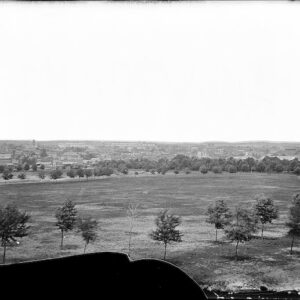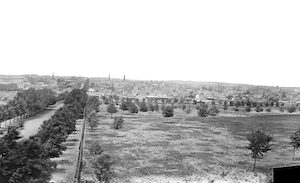Tag: Old Patent Office Building (Washington DC)
 Wikipedia says: The historic Old Patent Office Building in Washington, D.C. covers an entire city block defined by F and G Streets and 7th and 9th Streets NW in Chinatown. It served as one of the earliest United States Patent Office buildings.
Wikipedia says: The historic Old Patent Office Building in Washington, D.C. covers an entire city block defined by F and G Streets and 7th and 9th Streets NW in Chinatown. It served as one of the earliest United States Patent Office buildings.
Designed in the Greek Revival style by architect Robert Mills, construction started in 1836, and the massive structure took 31 years to complete. United States patent law required inventors to submit scale models of their inventions, which were retained by the Patent Office and required housing. Once home to many early government departments, including the first exhibits of the Smithsonian, today the structure houses two museums of the Smithsonian Institution, the Smithsonian American Art Museum and the National Portrait Gallery.
In Pierre (Peter) Charles L’Enfant’s plan for the capital city, the site of the Patent Office Building, halfway between the Capitol and the President’s House, was set aside for a monumental structure. L’Enfant envisaged a nondenominational “church of the Republic”, which he later modified to a Pantheon devoted to great Americans. Mill’s described the proportions of the Greek Revival central portico as “exactly those of the Parthenon of Athens”, a departure in Washington, where previously ambitious public buildings had been based on Roman and Renaissance precedents. Fireproofing the design was an essential concern: Mills spanned the interior spaces with masonry vaulting without the use of wooden beams. Skylights and interior light courts filled the spaces with daylight.
After years of political infighting, in which Congressional committees questioned Mills’ competence and insisted on design changes that inserted unnecessary supporting columns and tie-rods, Mills was summarily dismissed in 1851. Construction continued under the direction of Thomas U. Walter, one of Mills’ harshest critics and was completed in 1865. The building’s west wing suffered a fire in 1877, destroying some 87,000 patent models; it was restored by Adolf Cluss, 1877–1885, in the style he termed “modern Renaissance”.
From 1854 to 1857, Clara Barton worked in the building as a clerk to the Patent Commissioner, the first woman federal employee to receive equal pay. During the Civil War, the building was turned into military barracks, hospital, and morgue. Wounded soldiers lay on cots in second-floor galleries, among glass cases holding models of inventions that had been submitted with patent applications. The American poet Walt Whitman frequented “that noblest of Washington buildings” and read to wounded men. The building was chosen as the venue for Lincoln’s Second Inaugural Ball in 1865. Whitman worked in Bureau of Indian Affairs, located in the building, from January 24 to June 30, 1865, before being fired for having a copy of Leaves of Grass in his desk.
Showing all 2 results

